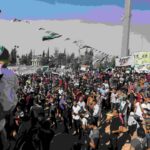Celebrating the Grassroots Diversity that Fuels the World’s Largest Democracy
Key Metrics:
- Linguistic Diversity: India recognizes 22 official languages under the Eighth Schedule of the Constitution and over 19,500 dialects, showcasing unparalleled linguistic diversity.
- Caste and Community Representation: 15% of Lok Sabha seats are reserved for Scheduled Castes and 7.5% for Scheduled Tribes, ensuring the inclusion of marginalized communities.
- Gender Inclusion: Over 1.3 million women hold positions in Panchayati Raj Institutions, accounting for 46% of elected representatives at the grassroots level.
- Religious Diversity: India is home to multiple religions, with Hindus, Muslims, Christians, Sikhs, Buddhists, and Jains coexisting and participating in governance.
News Body
India’s democracy, the largest in the world, thrives on its diversity. From the bustling streets of urban centers to the quiet lanes of rural villages, the country’s democratic framework embraces every language, religion, caste, and culture. This “symphony of democracy” is built on the voices of its people, ensuring that every community finds representation and participates in shaping the nation’s future.
Linguistic Diversity: A Democracy in Every Language
India’s linguistic diversity is one of its most defining features. With 22 official languages and thousands of dialects, elections are conducted in multiple languages to ensure inclusivity. Voter awareness campaigns, ballot papers, and government communications are often translated into regional languages, ensuring that no citizen is left behind due to linguistic barriers.
For instance, in states like Tamil Nadu, campaigns prominently feature Tamil, while in West Bengal, Bengali takes precedence. This linguistic adaptability ensures that people from different linguistic backgrounds can engage fully with the democratic process, strengthening grassroots participation.
Caste and Community: Building Inclusive Representation
India’s democratic system ensures that marginalized communities have a seat at the table. Reservations for Scheduled Castes and Scheduled Tribes in Parliament, state assemblies, and local governance bodies enable historically disadvantaged groups to voice their concerns and influence policy.
At the grassroots level, Panchayati Raj Institutions play a crucial role in empowering marginalized communities. These local governance bodies, established under the 73rd Amendment, ensure that decision-making reflects the needs of every community. Dalit and tribal leaders often rise from these institutions, bringing grassroots issues into the national discourse.
Gender Diversity: Women in Democracy
India’s democracy is increasingly reflecting gender diversity, particularly at the grassroots level. Over 1.3 million women serve as elected representatives in Panchayati Raj Institutions, often leading development initiatives in their villages.
Programs like Beti Bachao, Beti Padhao and the reservation of seats for women in local governance have encouraged greater participation. Women sarpanches have been instrumental in addressing issues like education, healthcare, and sanitation, showcasing how gender diversity enriches democracy at the grassroots level.
Religious Plurality: Harmony in Diversity
India’s democracy is a microcosm of its religious diversity. Hindus, Muslims, Christians, Sikhs, Buddhists, and Jains coexist and contribute to the democratic process. Festivals from Diwali to Eid, Christmas to Guru Nanak Jayanti, are celebrated across communities, reflecting the spirit of unity.
Religious leaders and organizations often play an active role in encouraging voter participation, fostering dialogue between communities, and advocating for peaceful coexistence. This pluralism strengthens India’s democracy, ensuring that governance reflects the aspirations of every faith.
Grassroots Movements: The Pulse of Democracy
At the heart of India’s democracy are grassroots movements. Farmers’ protests, tribal rights campaigns, and gender justice movements exemplify the power of collective voices. These movements often start in remote regions and rise to national prominence, influencing policies and legislation.
For instance, the recent emphasis on environmental conservation has been driven by grassroots activism in tribal and rural areas, where communities advocate for sustainable development and protection of natural resources.
Challenges and the Path Forward
Despite its diversity, India’s democracy faces challenges such as political polarization, economic disparities, and social inequality. Addressing these requires sustained efforts to deepen inclusion, improve representation, and foster equitable development.
Investing in education, digital connectivity, and capacity-building programs at the grassroots level can amplify diverse voices, ensuring that democracy remains inclusive and robust.
Conclusion
India’s democracy is a testament to its diversity, thriving on the participation of people from every language, caste, religion, and region. The symphony of these diverse voices creates a vibrant democratic fabric that adapts to change while staying true to its principles.
As the nation continues its democratic journey, celebrating and strengthening grassroots diversity will remain key to building an inclusive, equitable, and harmonious future for all its citizens.







